Goal: Share basic Google Analytics metrics marketers should keep in mind when assessing their website’s traffic, specifically based on the goal of their sites.
Today’s online tracking capabilities make measuring and monitoring your online marketing efforts no longer just an option, but a great essential. But with so many options available to track, where do you even start? And how do you know what’s relevant?
One of the best tools for site tracking is Google Analytics, but if you aren’t familiar or don’t have a go-to Google Analytics expert on staff, knowing exactly where and what to look for can quickly become overwhelming.
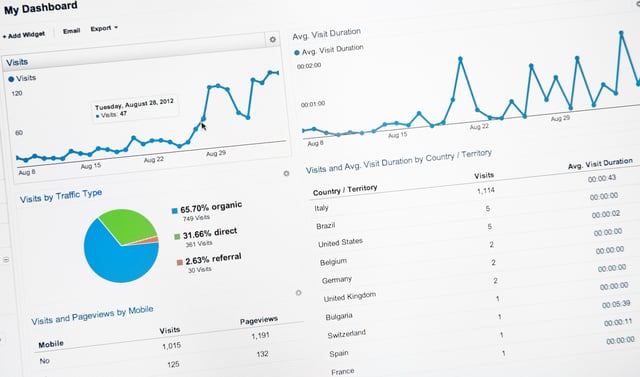
To help shed some light, we’ve created a quick breakdown of some of the key metrics to monitor on your site depending on your purpose.
If your goal is for the reader to take action:
You have a defined purpose for your site and ultimately want your visitor to not only stop by, but also to take a specific action. Perhaps you have a page with a lead capture form or are aiming for a contact request or purchase. While a form can capture the information, applying these stats will help call out key insights along the way.
- Goals:
- What it is: Setting up tracking for a specific sequence of actions to help you identify your users’ movement towards a targeted action.
- Why it is helpful: By identifying and tracking the steps towards your goals up front, you can know what your ideal visitor’s experience is and see where barriers are occurring that prevent users from reaching the ultimate goal action.
- Events:
- What it is: Tracking of specific interactions with items on your page like video views, file downloads, etc.
- Why it is helpful: While Google Analytics will capture page views by default, if there is specific page content you want to have tracked for interactions, you can miss it without tracking the event type. Event tracking will capture the total number of plays or downloads on your page.
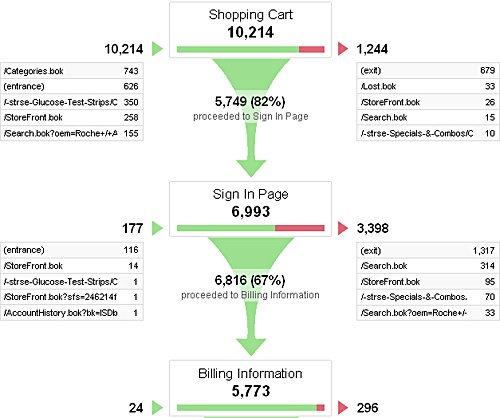
If your goal is content consumption:
Perhaps you are looking to develop (or already have) great resources to share with your audience. While great content is key, how can you know if visitors are using and engaging with it?
- Average Session Duration:
- What it is: The average time a user is actively engaged with site content.
- Why it is helpful: If you have a low session duration, you may need to tweak your content’s formatting, copy, etc. to help grab and engage your visitor to stay longer.
- Bounce Rate:
- What it is: Percentage of people who leave your website from the same page they entered without visiting another page.
- Why it is helpful: Similarly to having a low session duration, if you have a high bounce rating, this means your users are not being enticed to stay and look further around the site or engage with your content.
- Top Pages:
- What it is: Identifies the top pages on your site by page views, time on page, etc.
- Why it is helpful: You can quickly see which content on your site is getting the highest amount of traffic. Use this to your benefit to ID trends in the topic, formatting, etc.
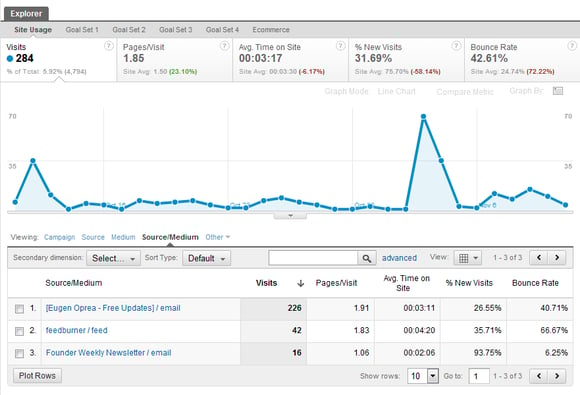
If your goal is building traffic:
You’ve set up your social media and PPC campaigns to help continue to drive people to your site. Maybe you’ve also started incorporating SEO. Now it’s time to close the loop and see how efforts outside your site are impacting your traffic.
- Channels/Source:
- What it is: Allows you to see how users are coming to your site by channel and specific source. Types of channels include:
- Referrals: Websites directing traffic to your site.
- Direct: The URL typed into the browser directly.
- Organic Search: Traffic from your search engines like Google, Bing and Yahoo searches.
- Why it is helpful: By identifying and looking at your channels and sources, you can quickly see if your efforts on Facebook are leading to a higher growth from that area over time or if that continued effort with SEO is increasing your traffic from Organic Search.
- What it is: Allows you to see how users are coming to your site by channel and specific source. Types of channels include:
- New Visitors vs. Returning Visitors:
- What it is: Percentage breakdown of how many visitors coming to your site for the first time are new versus returning.
- Why it is helpful: Rather than just looking at total traffic, this will help you see the total amount of new visitors. This will show you if your site has content that continues to draw back visitors, if it has primarily single new visitors, or if it has a combination of a growing following and attraction for new visitors.
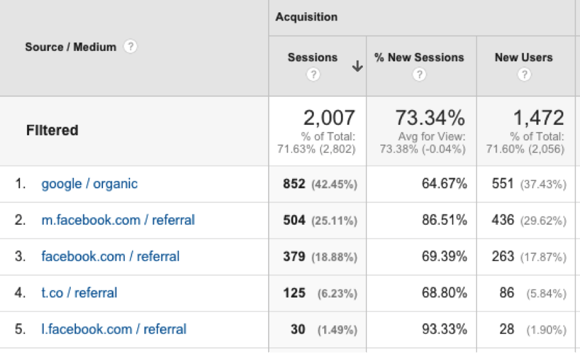
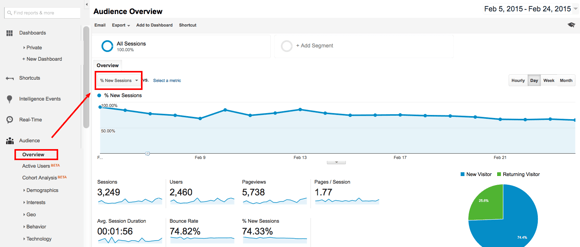
For more tips and details on setting up these analytics, you can find more detailed explanations and video tutorials at https://analytics.google.com.





